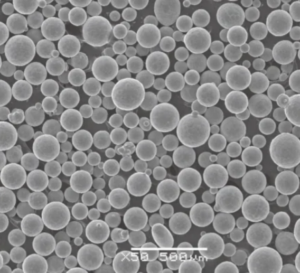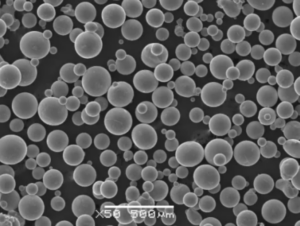Nihai kılavuza hoş geldiniz plazma gaz atomizörleri! Eğer buradaysanız, sayısız endüstride kullanılan ince metal tozları üretmek için bilimin en son teknolojiyle buluştuğu plazma gazı atomizasyonunun büyüleyici dünyasına derinlemesine dalmak istiyorsunuz demektir. Bu makale sizi plazma gazı atomizörlerinin bileşimi ve özelliklerinden uygulamalarına ve teknik özelliklerine kadar her yönüyle ele alacaktır. Benzetmeler, metaforlar ve karmaşık konuların anlaşılmasını kolaylaştıran gayri resmi bir tonla dolu ilgi çekici bir yolculuk için kemerlerinizi bağlayın.
Plazma Gaz Atomizörlerine Genel Bakış
Plazma gazı atomizasyonu, ince metal tozları üretmek için kullanılan bir tekniktir. Katı bir metali küçük damlacıklardan oluşan bir sise dönüştürebilen ve daha sonra katılaşarak toz parçacıklarına dönüşen bir makine hayal edin. Bir plazma gazı atomizörünün yaptığı da esasen budur. Metali eritmek için yüksek enerjili bir plazma torcu kullanır ve daha sonra bir gaz akışı ile damlacıklar halinde atomize edilir. Bu damlacıklar hızla soğuyarak ince, küresel metal tozları oluşturur.
Bu yöntem, eklemeli üretim (3D baskı), havacılık ve uzay ve biyomedikal mühendisliği gibi yüksek kaliteli metal tozları gerektiren endüstrilerde popülerdir. Üretilen metal tozları tek tip boyutları, yüksek saflıkları ve mükemmel akışkanlıkları ile ödüllendirilir.
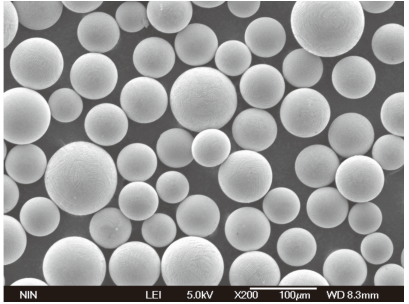
Üretilen Metal Tozu Türleri
İşte plazma gaz atomizörleri tarafından üretilen ve her biri kendine özgü özelliklere ve uygulamalara sahip belirli metal tozu modellerinin bir listesi:
| Metal Tozu Modeli | Kompozisyon | Mülkler | Uygulamalar |
|---|---|---|---|
| Ti-6Al-4V | Titanyum alaşımı | Yüksek mukavemet, korozyon direnci | Havacılık ve uzay, biyomedikal implantlar |
| Inconel 718 | Nikel-krom alaşımı | Yüksek sıcaklık, oksidasyon direnci | Türbin kanatları, havacılık |
| 316L Paslanmaz Çelik | Demir, krom, nikel | Korozyon direnci, biyouyumluluk | Tıbbi cihazlar, deniz uygulamaları |
| AlSi10Mg | Alüminyum-silisyum-magnezyum alaşımı | Hafif, yüksek ısı iletkenliği | Otomotiv, havacılık ve uzay |
| CoCrMo | Kobalt-krom-molibden alaşımı | Aşınma direnci, yüksek mukavemet | Diş implantları, ortopedik cihazlar |
| NiCoCrAlY | Nikel-kobalt-krom-alüminyum-itriyum | Termal stabilite, oksidasyon direnci | Termal bariyer kaplamalar |
| CuSn10 | Bakır-kalay alaşımı | Yüksek elektrik iletkenliği, aşınma direnci | Elektrikli bileşenler, rulmanlar |
| FeNiCo | Demir-nikel-kobalt alaşımı | Manyetik özellikler | Elektronik, manyetik uygulamalar |
| Ti-48Al-2Cr-2Nb | Titanyum-alüminyum-krom-niyobyum alaşımı | Yüksek sıcaklık, hafif | Havacılık ve uzay, otomotiv |
| Al7075 | Alüminyum-çinko-magnezyum-bakır alaşımı | Yüksek mukavemet/ağırlık oranı | Havacılık ve uzay, spor malzemeleri |
Bileşimi Plazma Gaz Atomizasyonu Metal Tozları
Plazma gaz atomizörleri tarafından üretilen metal tozlarının bileşimi, belirli alaşıma ve amaçlanan uygulamaya bağlı olarak büyük ölçüde değişebilir. Örneğin, popüler bir titanyum alaşımı olan Ti-6Al-4V, titanyum, alüminyum ve vanadyumdan oluşur ve mükemmel bir güç, ağırlık ve korozyon direnci dengesi sağlar. Öte yandan, bir nikel-krom alaşımı olan Inconel 718, yüksek sıcaklıklara dayanma ve oksidasyona direnme kabiliyetiyle ünlüdür.
Detaylı Bileşim Tablosu
| Metal Tozu Modeli | Elemental Bileşim |
|---|---|
| Ti-6Al-4V | Ti (), Al (%6), V (%4) |
| Inconel 718 | Ni (-55), Cr (-21), Fe (denge), Nb (%4,75-5,5), Mo (%2,8-3,3) |
| 316L Paslanmaz Çelik | Fe (denge), Cr (-18), Ni (-14), Mo (%2-3) |
| AlSi10Mg | Al (denge), Si (%9-11), Mg (%0,2-0,45) |
| CoCrMo | Co (denge), Cr (-30), Mo (%5-7) |
| NiCoCrAlY | Ni (denge), Co (-23), Cr (-19), Al (%5-11), Y (%0,2-0,6) |
| CuSn10 | Cu (denge), Sn (%9-11) |
| FeNiCo | Fe (denge), Ni (-30), Co (-20) |
| Ti-48Al-2Cr-2Nb | Ti (denge), Al (), Cr (%2), Nb (%2) |
| Al7075 | Al (denge), Zn (%5,1-6,1), Mg (%2,1-2,9), Cu (%1,2-2,0) |
Plazma Gazı Atomizörü Metal Tozlarının Özellikleri
Bu metal tozlarının özellikleri söz konusu olduğunda, parçacık boyutu dağılımı, morfoloji, saflık ve akışkanlık dahil olmak üzere çeşitli faktörler devreye girer. Şimdi bunları inceleyelim:
- Partikül Boyutu Dağılımı: Plazma gazı atomizasyonu tipik olarak tek tip partikül boyutu dağılımına sahip metal tozları üretir, bu da tutarlılığın önemli olduğu 3D baskı gibi uygulamalar için çok önemlidir.
- Morfoloji: Üretilen partiküller genellikle küreseldir, bu da daha iyi akışkanlık ve paketleme yoğunluğuna katkıda bulunur, bu da katkılı üretimde toz yatağı füzyonu gibi işlemler için gereklidir.
- Saflık: Yüksek enerjili plazma ortamı, metal tozlarının diğer elementlerden veya oksitlerden minimum kirlenme ile son derece saf olmasını sağlar.
- Akışkanlık: Küresel partiküller düzensiz şekilli olanlardan daha kolay akar, bu da bu tozları malzemenin hassas kontrolünün gerekli olduğu uygulamalar için ideal hale getirir.
Özellikler Tablosu
| Mülkiyet | Açıklama |
|---|---|
| Parçacık Boyutu | Tipik olarak 10 ila 100 mikron arasında değişir |
| Şekil | Çoğunlukla küresel |
| Saflık | > |
| Akışkanlık | Mükemmel |
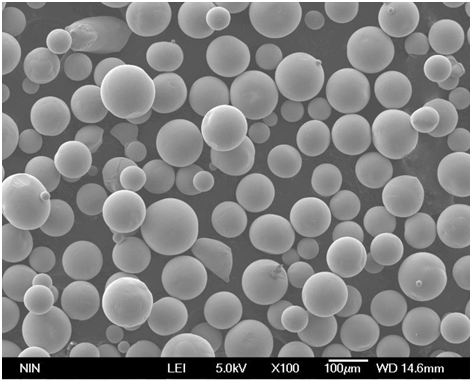
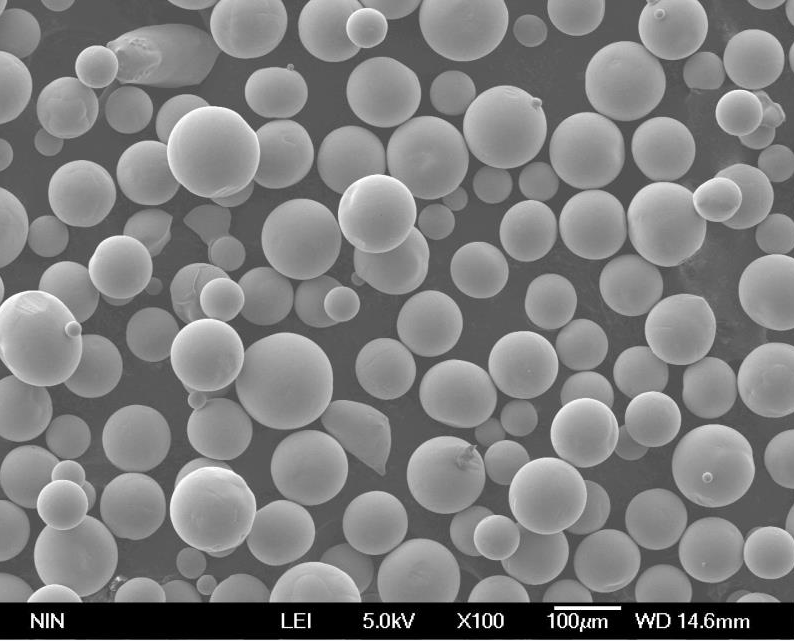

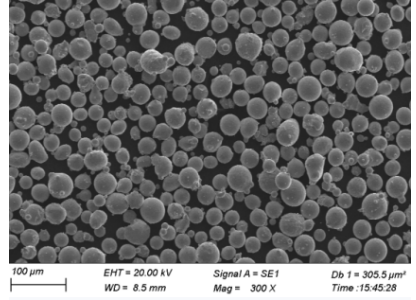

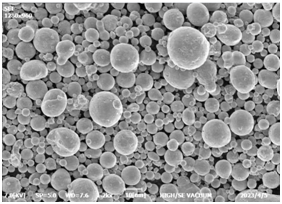
Uygulamaları Plazma Gaz Atomizasyonu Metal Tozları
Plazma gaz atomizörleri tarafından üretilen metal tozları çok çeşitli sektörlerde uygulama alanı bulmaktadır. İşte temel uygulamalardan bazıları:
Uygulamalar Tablosu
| Endüstri | Uygulama | Metal Toz Modelleri |
|---|---|---|
| Havacılık ve Uzay | Türbin kanatları, yapısal bileşenler | Inconel 718, Ti-6Al-4V |
| Biyomedikal | İmplantlar, diş protezleri | CoCrMo, Ti-6Al-4V |
| Otomotiv | Motor bileşenleri, hafif yapılar | AlSi10Mg, Ti-48Al-2Cr-2Nb |
| Elektronik | Manyetik malzemeler, iletken bileşenler | FeNiCo, CuSn10 |
| Katmanlı Üretim | Prototiplerin ve parçaların 3D baskısı | Tüm modeller |
Spesifikasyonlar, Boyutlar, Kaliteler ve Standartlar
Belirli uygulamalar için metal tozları seçerken, spesifikasyonlarını, boyutlarını, derecelerini ve standartlarını dikkate almak çok önemlidir. Bu faktörler, tozların performans ve güvenlik için gerekli gereksinimleri karşılamasını sağlar.
Teknik Özellikler Tablosu
| Metal Tozu Modeli | Boyut Aralığı | Sınıf | Standart |
|---|---|---|---|
| Ti-6Al-4V | 15-45 mikron | 5. Sınıf | ASTM F2924 |
| Inconel 718 | 20-63 mikron | UNS N07718 | AMS 5662 |
| 316L Paslanmaz Çelik | 15-45 mikron | Sınıf 316L | ASTM F138 |
| AlSi10Mg | 20-60 mikron | A Sınıfı | ISO 3522 |
| CoCrMo | 10-50 mikron | ASTM F75 | ASTM F75 |
| NiCoCrAlY | 10-80 mikron | Özel notlar | ISO 15156-3 |
| CuSn10 | 15-63 mikron | CW453K | EN 1982 |
| FeNiCo | 20-100 mikron | Özel notlar | IEC 60404-8-6 |
| Ti-48Al-2Cr-2Nb | 20-45 mikron | Özel notlar | AMS 4822 |
| Al7075 | 15-63 mikron | 7075 Sınıfı | ASTM B211 |
Tedarikçiler ve Fiyatlandırma Detayları
Metal tozlarının tedariki söz konusu olduğunda, çok sayıda tedarikçi çeşitli ürünler sunmaktadır. Fiyatlandırma malzemeye, miktara ve kaliteye bağlı olarak önemli ölçüde değişebilir.
Tedarikçiler ve Fiyatlandırma Tablosu
| Tedarikçi | Metal Tozu Modeli | Fiyat (kg başına) |
|---|---|---|
| AP&C | Ti-6Al-4V | $300 – $400 |
| Praxair Yüzey Teknolojileri | Inconel 718 | $200 – $350 |
| Sandvik | 316L Paslanmaz Çelik | $100 – $200 |
| LPW Teknoloji | AlSi10Mg | $80 – $150 |
| Marangoz Katkısı | CoCrMo | $250 – $400 |
| HC Starck | NiCoCrAlY | $300 – $500 |
| Höganäs | CuSn10 | $50 – $100 |
| Kennametal | FeNiCo | $150 – $250 |
| ATI Toz Metaller | Ti-48Al-2Cr-2Nb | $400 – $600 |
| Valimet | Al7075 | $100 – $200 |
Artıları ve Eksileri Plazma Gaz Atomizasyonu Metal Tozları
Plazma gazı atomizörlü metal tozlarının avantajlarını ve sınırlamalarını anlamak, bilinçli kararlar vermenize yardımcı olabilir.
Karşılaştırma Tablosu
| Aspect | Avantajlar | Sınırlamalar |
|---|---|---|
| Parçacık Boyutu | Düzgün dağılım | Boyut aralığı sınırlı olabilir |
| Şekil | Küresel parçacıklar | Daha yüksek üretim maliyeti |
| Saflık | Yüksek saflık seviyeleri | Sıkı kontrol gerektirir |
| Akışkanlık | Mükemmel akış özellikleri | Nemden etkilenebilir |
| Uygulamalar | Geniş uygulama yelpazesi | Bazı metaller pahalıdır |
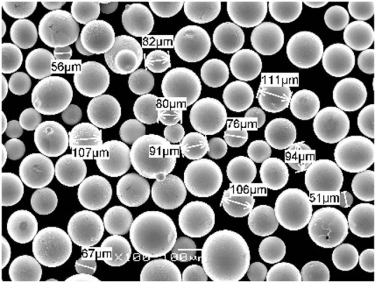
SSS
| Soru | Cevap |
|---|---|
| Plazma gazı atomizasyonu nedir? | Plazma gazı atomizasyonu, metali eritmek ve küresel tozlar halinde katılaşan ince damlacıklar halinde atomize etmek için bir plazma torcu kullanan bir işlemdir. |
| Küresel metal tozları neden tercih edilir? | Küresel tozlar, eklemeli üretim gibi süreçler için çok önemli olan daha iyi akışkanlığa ve paketleme yoğunluğuna sahiptir. |
| Bu metal tozlarının bazı yaygın uygulamaları nelerdir? | Havacılık ve uzayda, biyomedikal implantlarda, otomotiv bileşenlerinde ve elektronikte kullanılırlar. |
| Partikül boyutu uygulamayı nasıl etkiler? | Daha küçük, tek tip partiküller üretim süreçlerinde daha iyi hassasiyet ve tutarlılık sağlar. |
| Metal tozlarının maliyetini etkileyen faktörler nelerdir? | Malzeme türü, üretim yöntemi, saflığı ve tedarikçisi fiyatı etkileyebilir. |
| Plazma gazı atomizasyonu ile ilgili herhangi bir çevresel sorun var mı? | Süreç nispeten temizdir, ancak enerji tüketimi ve hammadde tedarikinin çevresel etkileri olabilir. |
| Uygulamam için doğru metal tozunu nasıl seçerim? | Malzeme özelliklerini, uygulama gereksinimlerini ve maliyeti göz önünde bulundurun. Tedarikçilere danışmak da rehberlik sağlayabilir. |
| Metal tozlarının bileşimini özelleştirebilir miyim? | Evet, birçok tedarikçi belirli ihtiyaçları karşılamak için özel bileşimler sunmaktadır. |
| Plazma gazı atomizasyonunun diğer yöntemlere kıyasla başlıca avantajları nelerdir? | Daha yüksek saflık, küresel partiküller ve düzgün boyut dağılımı temel avantajlardır. |
| Bu metal tozlarını nereden alabilirim? | AP&C, Praxair ve Sandvik gibi çok sayıda tedarikçi çok çeşitli metal tozları sunmaktadır. |
Sonuç
Sonuç olarak, plazma gazı atomizörleri, çeşitli gelişmiş üretim süreçlerinde kullanılan yüksek kaliteli metal tozlarının üretilmesinde çok önemli bir rol oynamaktadır. İster havacılık, ister biyomedikal, otomotiv veya elektronik sektöründe olun, bu tozların bileşimini, özelliklerini ve uygulamalarını anlamak projenizin başarısını önemli ölçüde etkileyebilir. Bu kapsamlı kılavuz ile artık plazma gazı atomizörleri dünyasında güvenle gezinmek için gerekli bilgi donanımına sahipsiniz. Mutlu üretimler!
